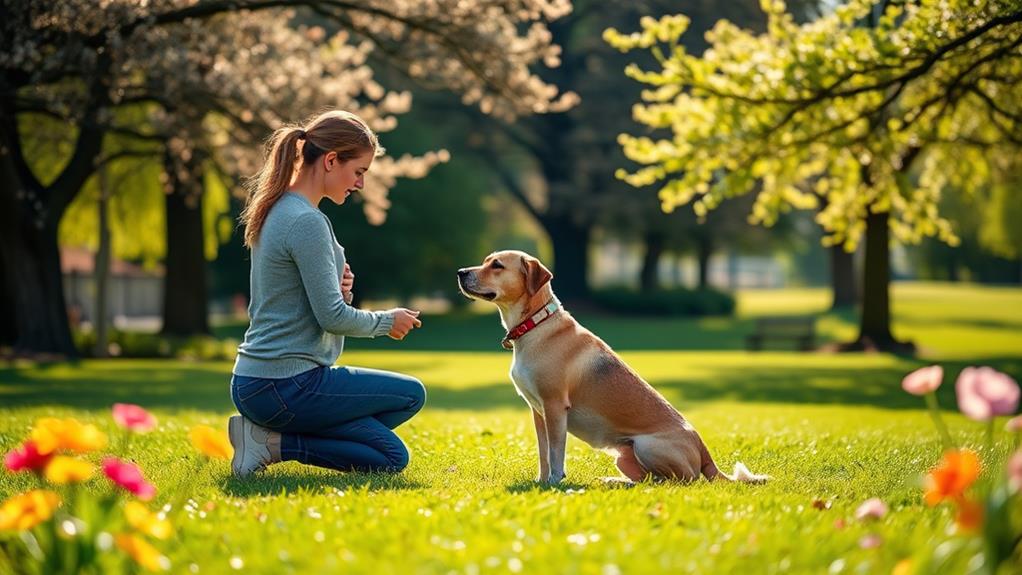Dog training can greatly help alleviate anxiety for both you and your dog. By creating structure and routine, training reduces stress and fosters a sense of security. Techniques like positive reinforcement encourage calm behaviors and help strengthen your bond with your pet. Additionally, engaging in training sessions increases your dog's confidence in unfamiliar situations. Socialization skills gained during training can also make your dog more comfortable in diverse environments, further diminishing anxiety triggers. With the right approach, you could see a positive transformation in your dog's demeanor. There's much more to explore about effective strategies that can enhance your training journey.
Understanding Anxiety in Dogs
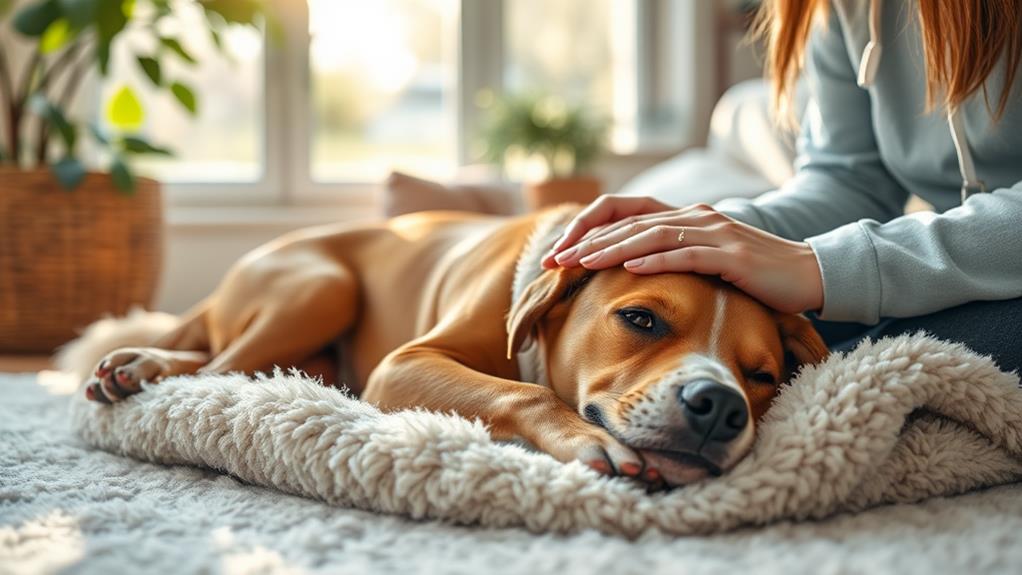
Anxiety in dogs can manifest in various ways, such as excessive barking, destructive behavior, or withdrawal. You might notice your furry friend trembling, pacing, or even hiding when they're feeling anxious. Understanding these signs is vital for addressing their needs.
Often, anxiety stems from changes in the environment, such as moving to a new home, the arrival of a new family member, or even loud noises like thunderstorms or fireworks. Recognizing the triggers can help you manage your dog's anxiety more effectively. For example, if your dog becomes anxious during storms, creating a safe space with their favorite blanket and toys can provide comfort.
It's essential to observe your dog's behavior to pinpoint specific triggers, so you can work on alleviating their stress. You might also find that some breeds are more prone to anxiety than others, so knowing your dog's breed characteristics can guide your understanding. By being proactive and attentive, you can create a nurturing environment that helps your dog feel more secure. Remember, it's a gradual process, and your patience will go a long way in helping your dog cope with their anxiety.
The Benefits of Dog Training
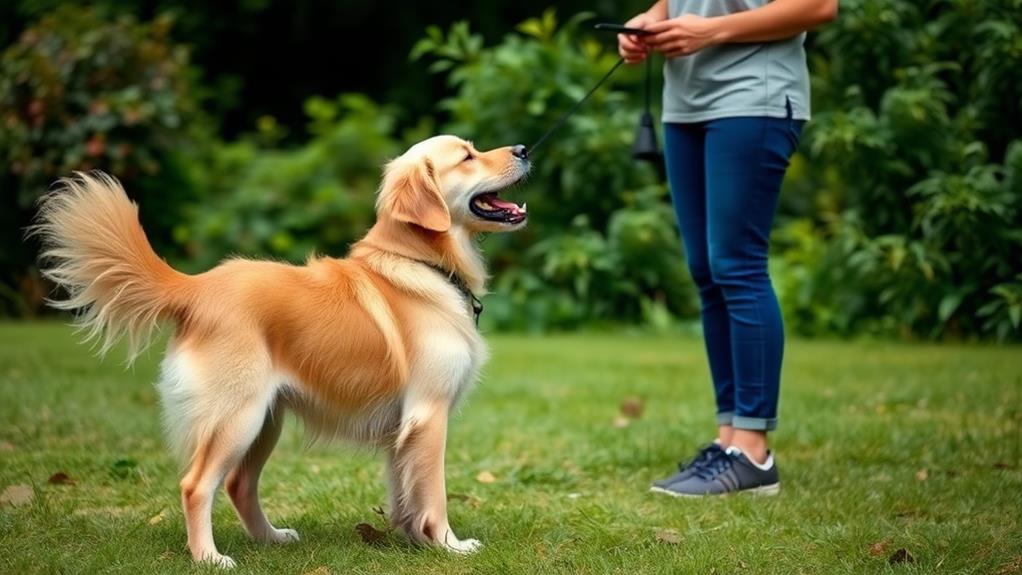
Training your dog not only strengthens your bond but also plays a significant role in alleviating anxiety. When you invest time in training, you create a sense of structure and routine for both you and your furry friend. This predictability can help reduce stress for both of you.
Improved Communication: Training helps you understand your dog's behavior better, leading to fewer misunderstandings and frustrations.
Increased Confidence: A well-trained dog feels more secure in various situations, which can lessen their anxiety in unfamiliar environments.
Enhanced Focus: Training sessions provide mental stimulation, helping your dog focus on tasks rather than worrying about potential stressors.
Strengthened Bond: The time spent training together fosters trust and affection, creating a deeper connection that can soothe both your and your dog's anxiety.
Training Techniques That Help
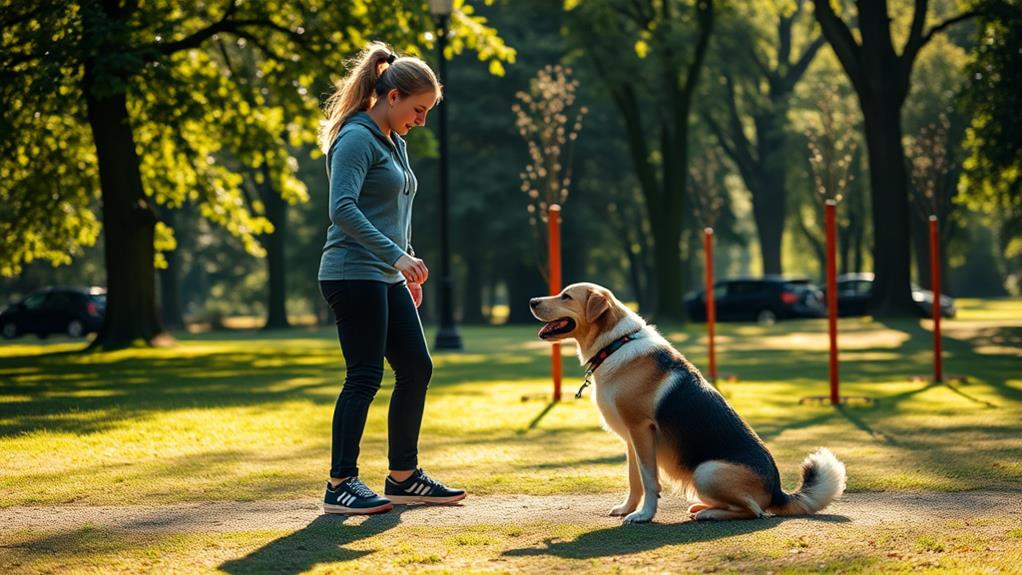
Many effective techniques can help you and your dog navigate anxiety together. One approach is positive reinforcement training, where you reward your dog for calm behavior. This method encourages them to associate certain situations with positive outcomes, reducing their stress levels over time.
Another useful technique is desensitization. Gradually exposing your dog to anxiety-inducing triggers in a controlled environment allows them to adjust without feeling overwhelmed. Start with low-intensity situations and slowly increase the exposure as your dog becomes more comfortable.
You can also implement structured routines. Dogs thrive on consistency, so establishing a daily schedule for walks, feeding, and playtime can provide a sense of security, which may alleviate anxiety.
Incorporating mental stimulation is vital, too. Engaging your dog in puzzle toys or training exercises can redirect their focus from anxious thoughts to productive activities.
Lastly, don't underestimate the power of relaxation techniques. Simple exercises like deep breathing or gentle massage can help soothe both you and your dog during stressful moments. By using these techniques, you can create a calmer environment, making it easier for both of you to cope with anxiety.
Building a Stronger Bond

Creating a stronger bond with your dog can markedly improve their overall well-being and help manage anxiety. When your dog feels secure in your relationship, they're more likely to respond positively to training and engage in social situations. Building that bond involves trust, love, and consistent interaction.
Spend quality time together: Regular playtime or walks can help you both unwind and enjoy each other's company.
Use positive reinforcement: Celebrating your dog's successes with treats and praise fosters a sense of achievement and encourages good behavior.
Engage in training sessions: Short, fun training exercises not only teach skills but also enhance your communication and understanding.
Practice mindfulness: Be present during your interactions. A calm demeanor on your part can create a soothing environment for your dog.
Routine and Structure for Stability
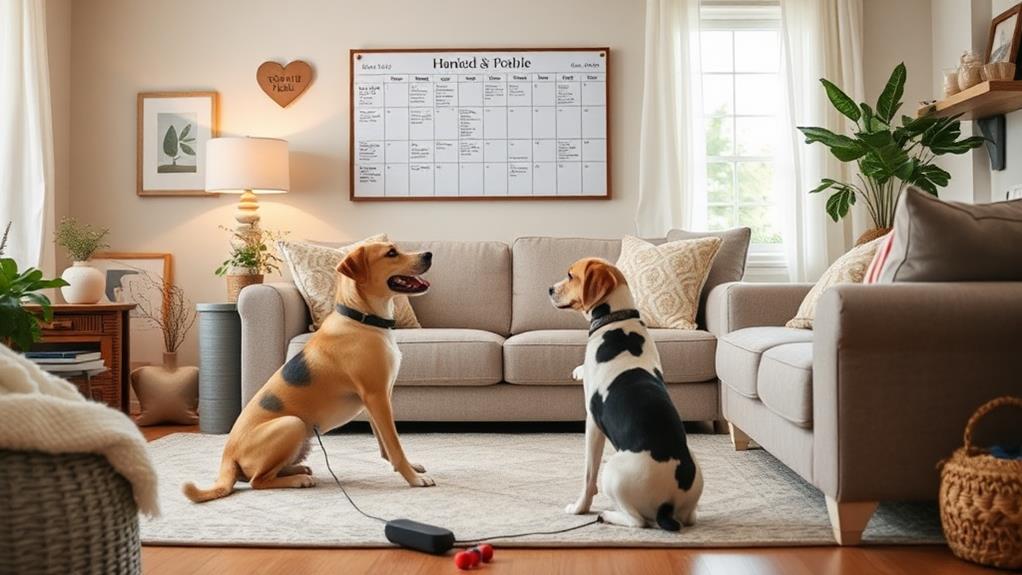
Establishing a consistent routine can greatly enhance your dog's sense of security and help alleviate anxiety. Dogs thrive on predictability, and knowing what to expect each day can reduce stress. By creating a structured schedule for feeding, walks, playtime, and training, you provide your furry friend with the stability they crave.
Start by setting regular times for meals and exercise. This not only helps regulate your dog's digestion and energy levels but also reinforces their understanding of daily expectations. Incorporate training sessions into this routine as well. Short, engaging training exercises can stimulate your dog mentally and physically while reinforcing your bond.
Additionally, consider including quiet time in your dog's schedule. Establishing a designated space where they can relax and unwind is vital for their emotional well-being. This area should be free from distractions and allow your dog to feel safe.
Enhancing Socialization Skills
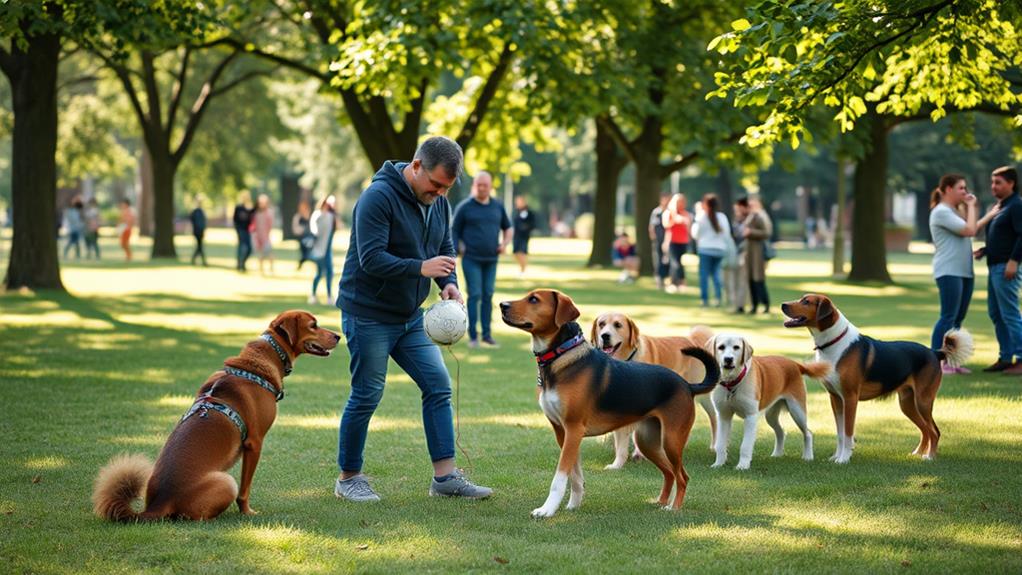
Building on a consistent routine, enhancing your dog's socialization skills can greatly reduce anxiety and improve their overall behavior. When dogs are well-socialized, they feel more comfortable in various environments and around different people and animals. This comfort helps lower stress levels and fosters confidence.
To enhance your dog's socialization skills, consider the following tips:
- Expose them to new environments: Take them to parks, busy streets, and pet-friendly stores to experience different sights and sounds.
- Introduce them to other dogs: Arrange playdates or visit dog parks to help them learn appropriate social behaviors.
- Encourage positive interactions: Reward your dog for calm behavior during social situations, reinforcing their confidence.
- Attend training classes: Group training sessions can be beneficial for teaching your dog how to interact with other dogs and humans in a controlled environment.
The Role of Positive Reinforcement
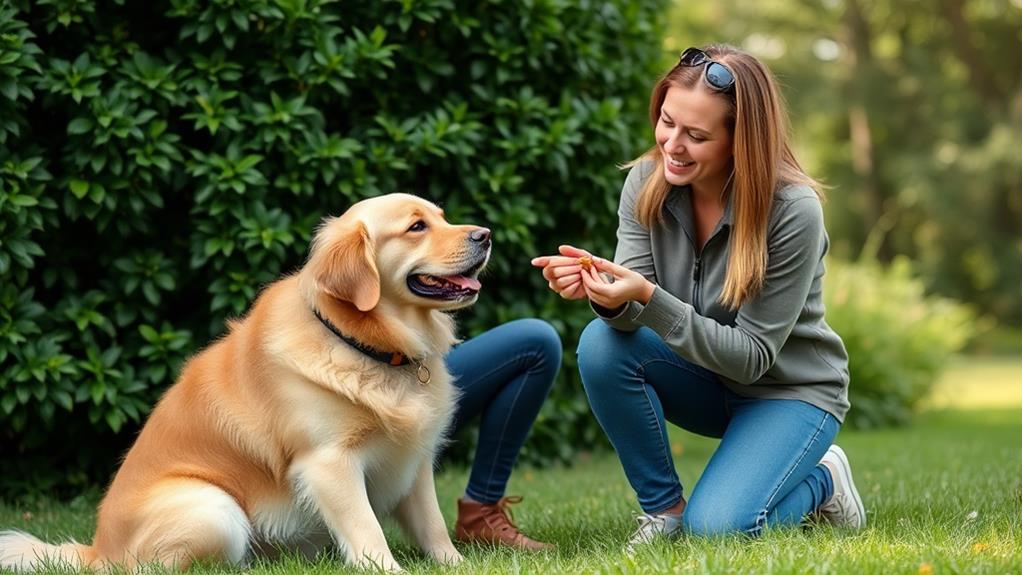
Positive reinforcement is a powerful tool in dog training that can greatly alleviate anxiety. When you reward your dog for desired behaviors, you create a positive association with those actions. This method not only encourages good behavior but also builds your dog's confidence, which is indispensable for anxious pets.
Using treats, praise, or play as rewards helps your dog understand what you expect. For instance, when your dog remains calm in a stressful situation, rewarding that behavior reinforces their ability to cope. Over time, they'll learn that staying calm leads to positive outcomes, reducing their anxiety in similar scenarios.
Moreover, positive reinforcement fosters a stronger bond between you and your dog. This trust can make your dog feel more secure and less anxious, knowing that you're there to support them. Instead of using negative reinforcement, which can heighten anxiety and fear, focus on celebrating small victories.
Ultimately, by consistently applying positive reinforcement, you empower your dog to navigate their world with greater confidence, making it easier for them to manage anxiety. This approach not only enhances training effectiveness but also contributes to your dog's overall well-being.
Success Stories and Testimonials
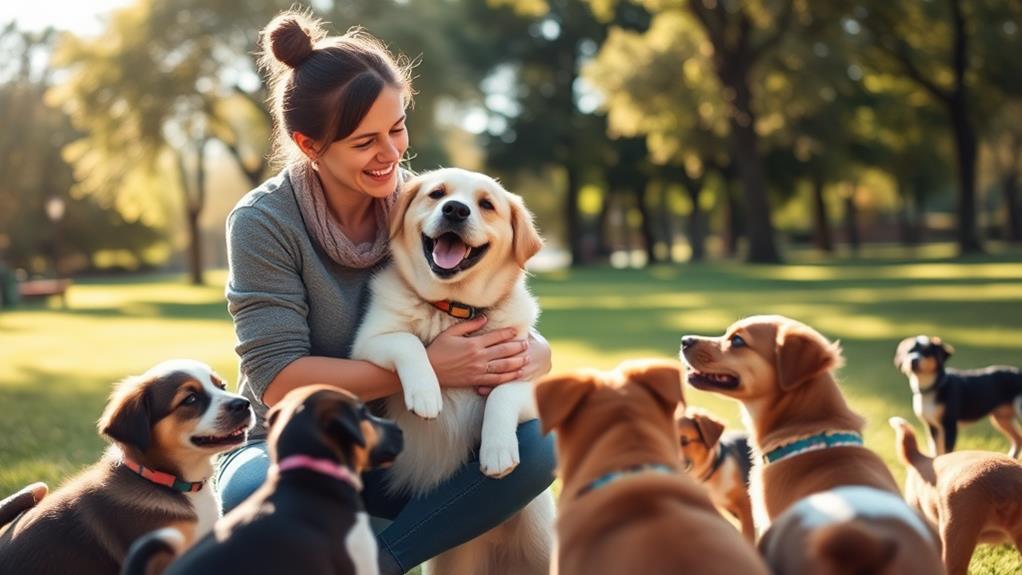
Many dog owners have witnessed remarkable transformations in their pets through effective training methods. These success stories often highlight how training can substantially reduce anxiety in dogs, leading to happier, more confident companions. You might be surprised by the positive changes you can achieve with dedication and the right techniques.
- Buddy's Journey: After just a few weeks of training, Buddy went from a fearful pup hiding under the bed to confidently exploring the yard and playing with other dogs.
- Luna's Transformation: Luna, once terrified of loud noises, now calmly sits by her owner during thunderstorms thanks to desensitization techniques.
- Max's Confidence Boost: Max, who previously struggled with separation anxiety, now enjoys alone time while his owner runs errands, thanks to crate training and gradual desensitization.
- Bella's Social Skills: Bella, a shy rescue, now greets new people enthusiastically after mastering basic commands and socialization exercises in training classes.
These stories show that with the right approach, you can help your dog overcome anxiety and thrive in everyday life.
Tips for Effective Training Sessions
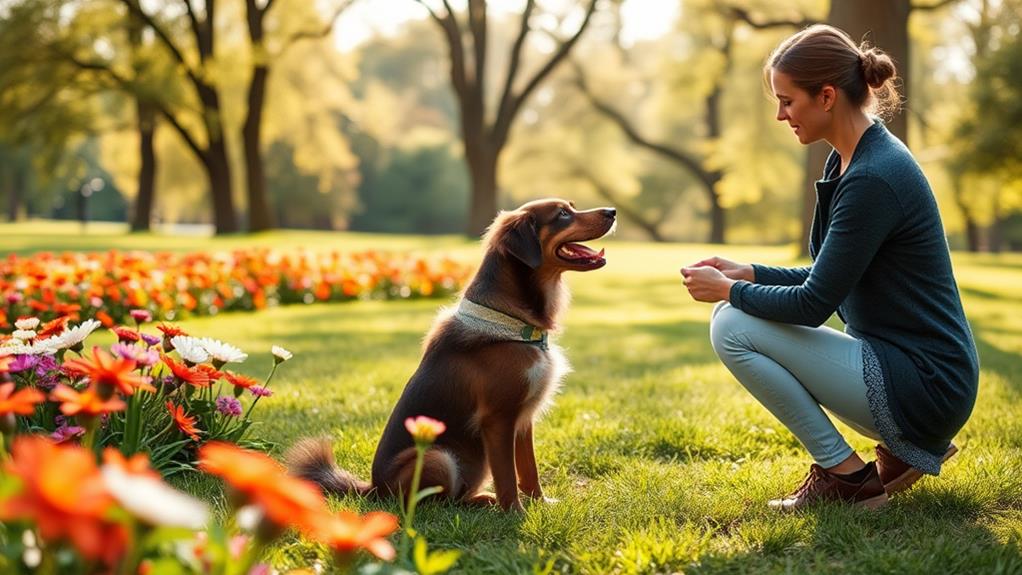
Transforming your dog's anxiety into confidence takes more than just time; it requires effective training sessions. To kick things off, set a consistent schedule. Dogs thrive on routine, so training at the same time each day helps them know what to expect. Keep sessions short, around 5 to 10 minutes, to maintain your dog's focus and enthusiasm.
Use positive reinforcement techniques. Reward your dog with treats, praise, or playtime when they follow commands or show signs of confidence. This builds a positive association with training and encourages them to engage more willingly.
Make the environment comfortable and low-stress. Choose a quiet space free from distractions to help your dog concentrate. If they seem overwhelmed, take a step back and try again later.
Incorporate fun into training by using games like hide and seek or fetch to reinforce commands in an enjoyable way. This approach not only alleviates anxiety but also strengthens the bond between you and your dog. Ultimately, be patient. Progress may take time, but with consistent and effective training sessions, your dog will gradually build confidence and reduce their anxiety.
Frequently Asked Questions
Can Dog Training Replace Medication for Anxious Dogs?
You shouldn't rely solely on dog training to replace medication for anxious dogs. While training can improve behavior, it often works best alongside medication and professional guidance to confirm your dog's mental well-being is fully supported.
How Long Does It Take to See Training Results?
You might start noticing training results within a few weeks, but consistency is key. Some dogs learn faster than others, so stay patient and keep practicing regularly to reinforce the desired behaviors effectively.
What Breeds Are Most Prone to Anxiety?
Certain breeds, like Dachshunds, Border Collies, and Terriers, are more prone to anxiety. You'll notice their nervous behaviors, especially in unfamiliar situations. Understanding your dog's breed can help you address their specific anxiety triggers effectively.
Is Group Training Better Than Individual Sessions?
Group training lets you and your dog socialize with others, building confidence and teamwork. Individual sessions offer tailored attention, focusing on specific needs. Both have benefits, so consider your dog's personality and your training goals.
Can Training Help With Separation Anxiety Specifically?
Training can markedly help with separation anxiety. By teaching your dog to feel secure when alone, you'll build their confidence and reduce stress. Consistent practice and positive reinforcement make a big difference in their comfort level.
Conclusion
In the end, dog training isn't just about obedience; it's a lifeline for anxious pups and their owners. Picture your furry friend, once trembling in corners, now striding confidently by your side, ears perked and tail wagging. With each training session, you're not just teaching commands; you're crafting a bond built on trust and understanding. Embrace this journey, and watch as your dog transforms, finding peace in the structure, love, and companionship you provide.

